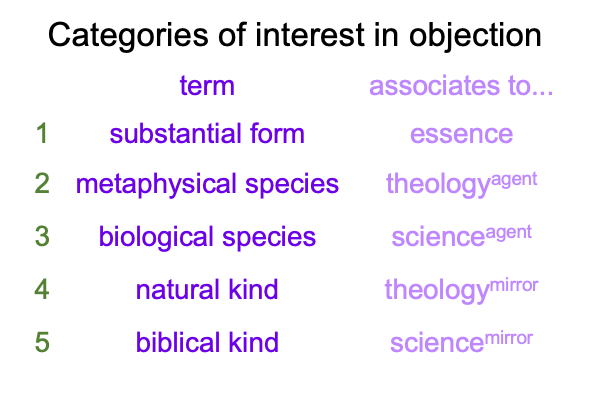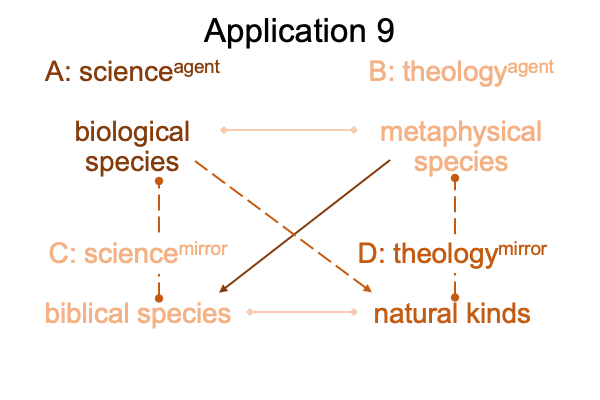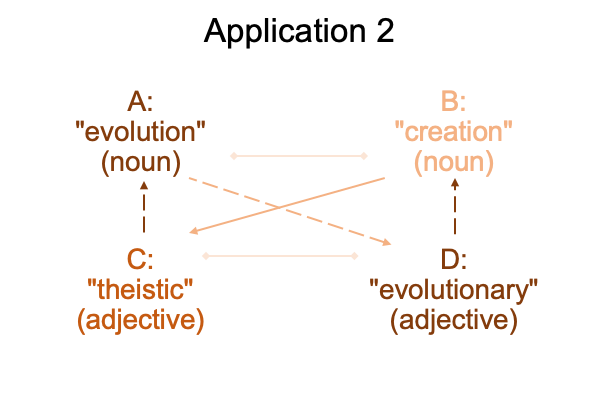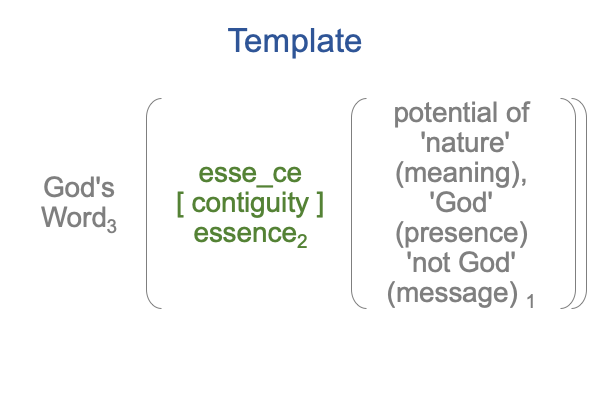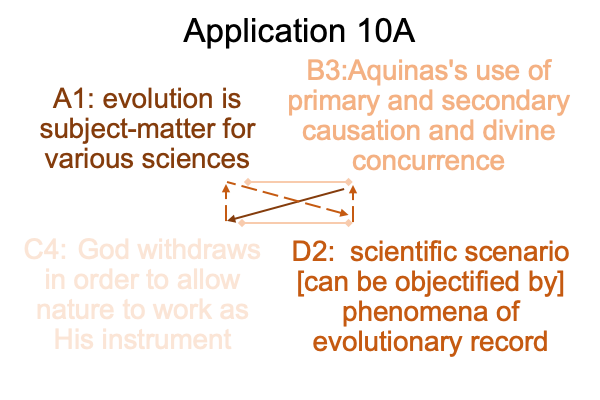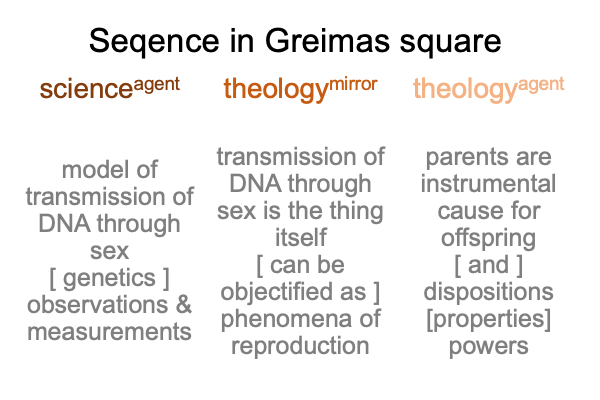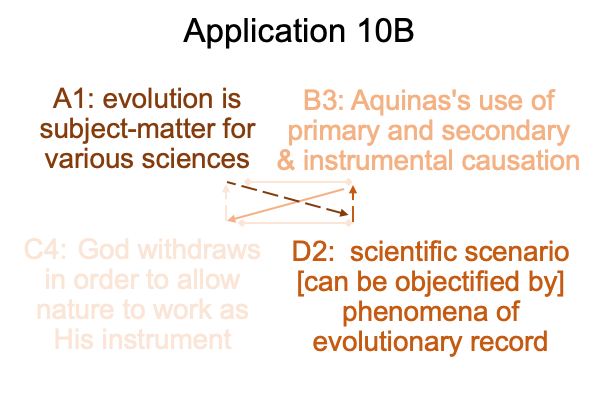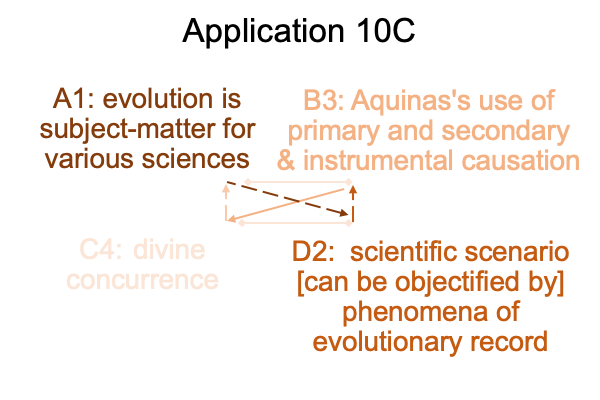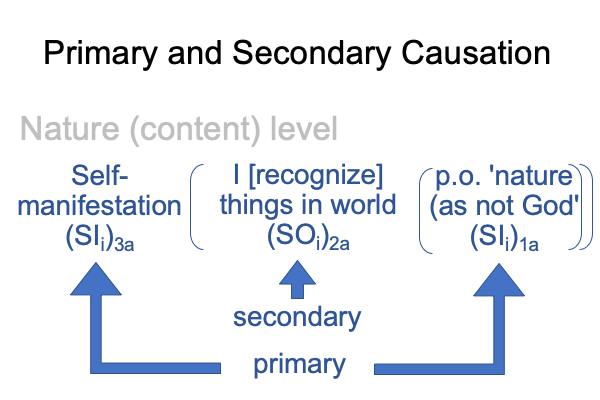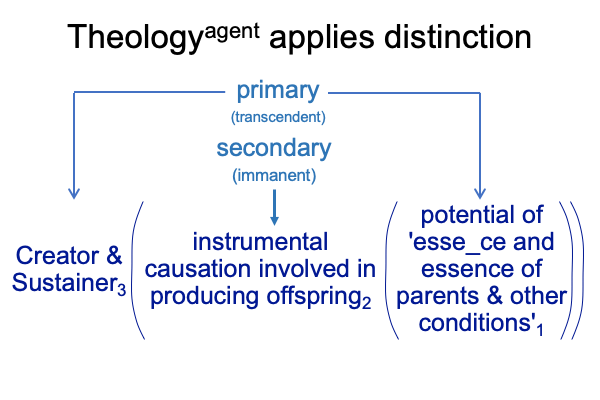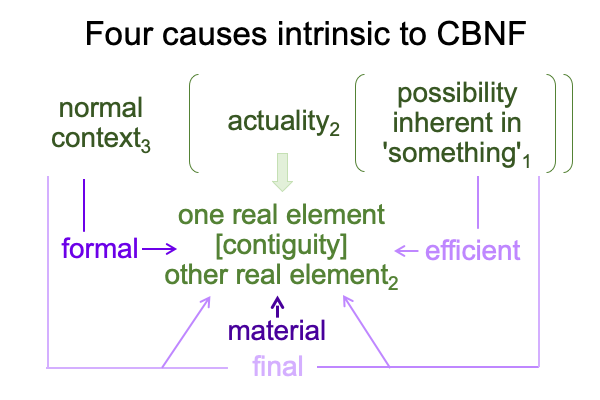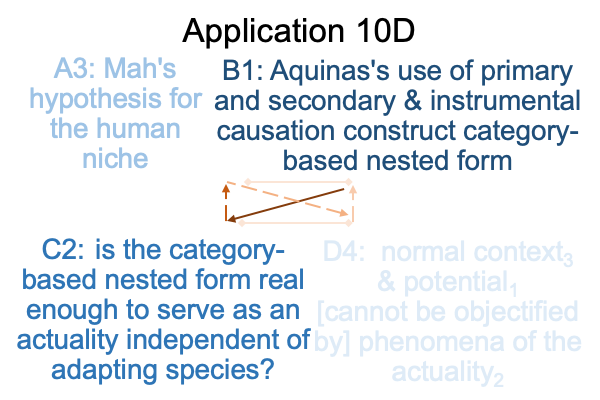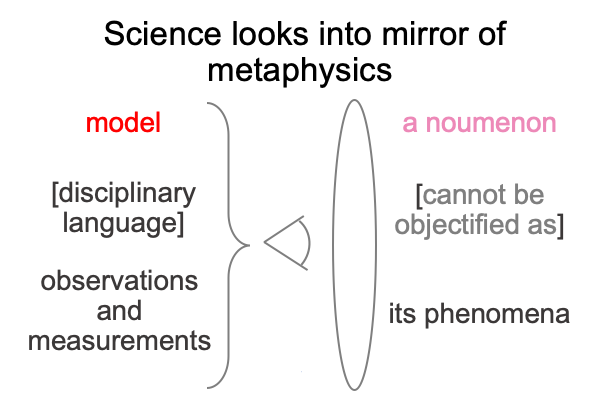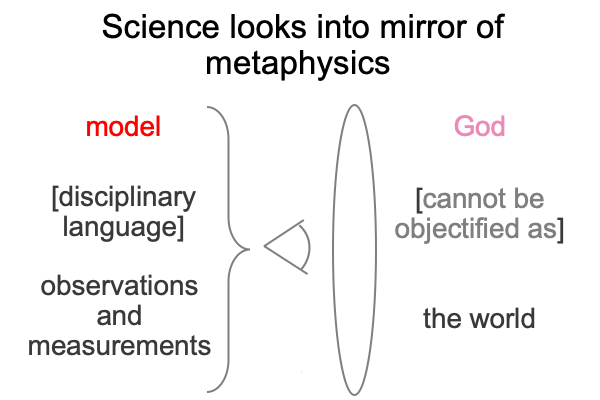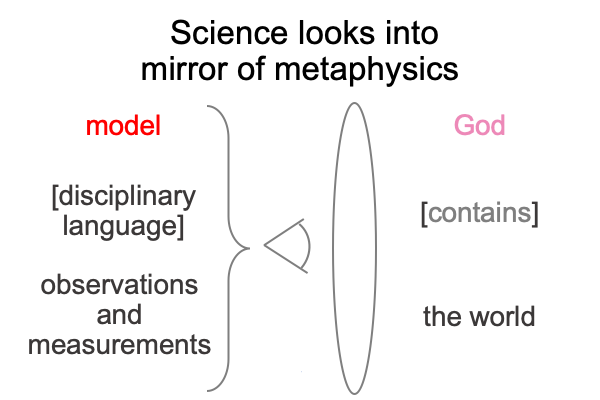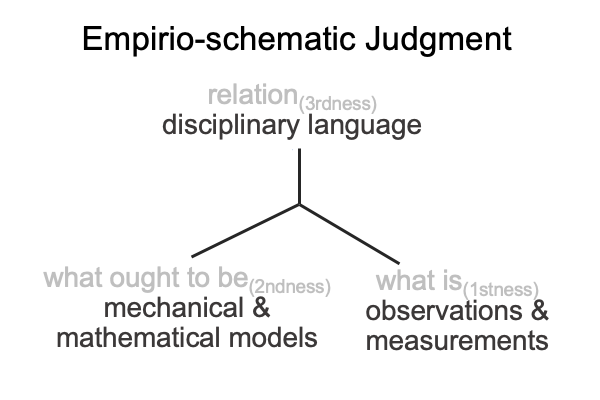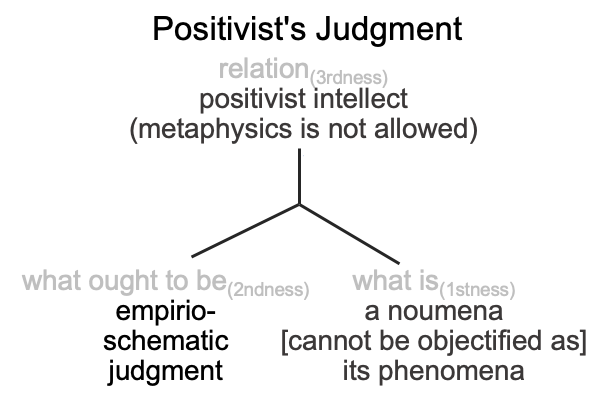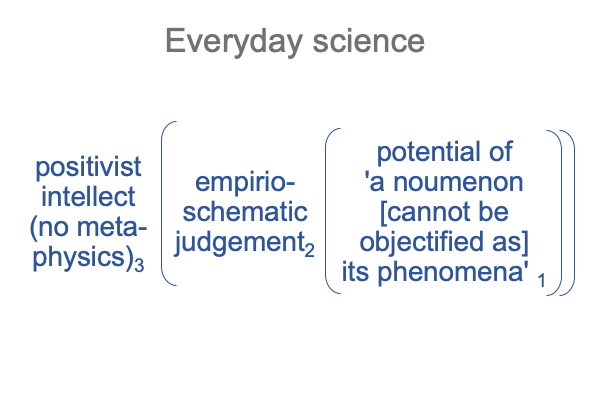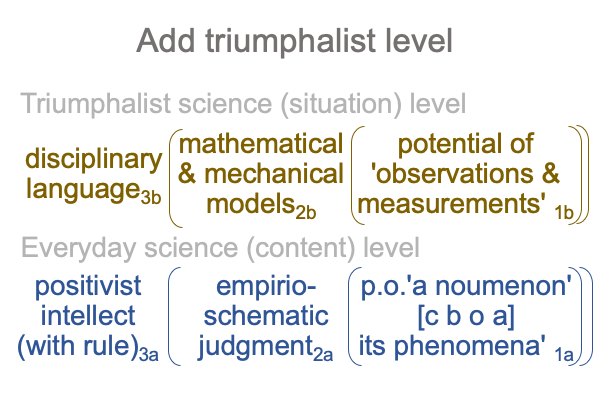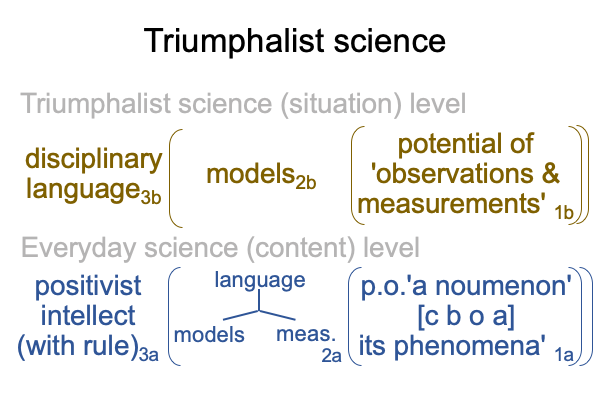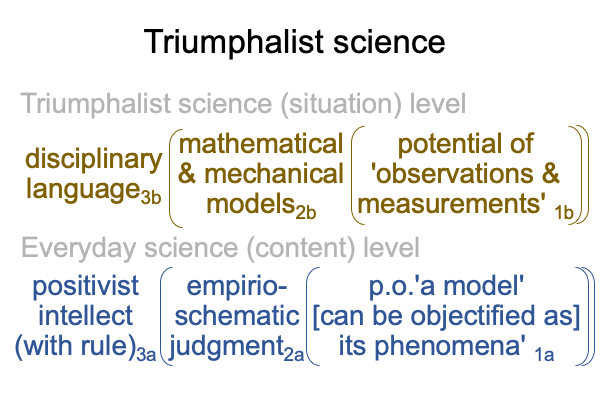Looking at Mariusz Tabaczek’s Book (2024) “Theistic Evolution” (Part 16 of 21)
0789 The second plate of Tabaczek’s theological banquet (B1) arrives.
The aroma moves me from the issues of paleolithic art, to the topic at hand.
0790 Now, that the positivist intellect is dead, but not really gone, scientific researchers in the various evolutionary sciences (A1) project their models, woven into a scientific scenario, onto the noumenon, the thing itself (D2), and, almost magically, the scientific scenario is objectified by phenomena of the evolutionary record (D2).
0791 Typically, a noumenon [cannot be objectified as] its phenomena. This hylomorphe stands as what is in the (now defunct) Positivist’s judgment. Too bad the positivist intellect is no longer in control.
What is associates to the realm of possibility, because a noumenon and its phenomena are… well… the same entity. There are no two real elements. There is only one, viewed from two points of view. A noumenon is the thing as a metaphysician sees it. Its phenomena are the thing’s observable and measurable facets. With luck, the resulting observations and measurements can be used to build a model, using scientific disciplinary language.
0792 What does this imply?
The projection of evolutionary science subject-matter (A1) into the mirror of theology (D2) produces the “evolutionary” of “evolutionary (D2) creation (B3)”, consisting of the Christian doctrine of creation (the noun, B3) modified by scientific models pretending to be the thing itself (the adjective, D2).
0793 Tabaczek’s project start fresh (B1), taking the pretense in the mirror of theology (D2) and using the terminology of Aquinas to fashion… well… not the day:age association that I just revealed… but… the possibility that such a day:age association or other associations can be fashioned at all.
Here is a picture of Tabaczek’s second plate.
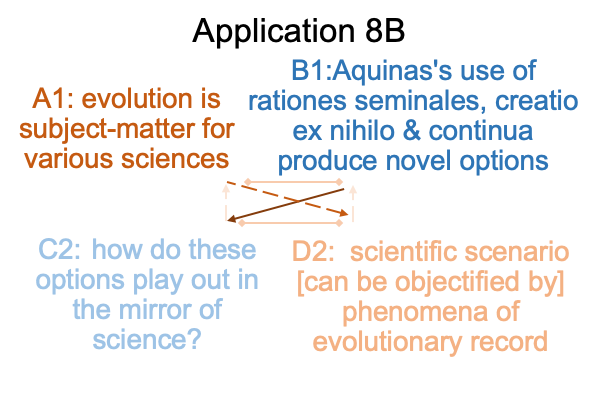
0794 As already noted, Tabaczek has good reason to imagine that his course of renewal will be regarded as a culinary… er… intellectual success.
Or should I say, “glorious success”?
In biological evolution, metaphysics is intrinsic to the single actuality in the intersection between adaptation2H and phenotype2V.
Plus, in other sciences, intersections occur as well.
For example, light is the intersection of particle physics and wave physics. The formation of solar systems may turn out to be an intersection between gravity & angular momentum and the electromagnetism produced by the motion of charged particles. The degassing of rocky planets may entail another intersection, say between chemical phase transitions and collision mechanics. The list goes on.
Plus, the hylomorphic structure of all things offers promise. As already portrayed, the actuality of each day of creationmay be portrayed as the hylomorphic structure of seed [contiguity] principle.
0795 In short, Tabaczek aims to put “theism” into the mirror of science in such a way that researchers in the evolutionary disciplines cannot ignore.
0796 He offers a number of the main postulates for a Thomistic version of theistic (C2) evolution (A3).
0797 Here is my reading of each item.
First, pay attention to models generated by the evolutionary sciences (A1). Pay particular attention to models in natural history and genetics.
Second, ask questions. Do these models correspond to what the believer expects to see in the mirror of theology (D2)? Does the scientist project the image of a noumenon [cannot be objectified as] its phenomena. Or does the advocate of science overlay the noumenon with models, so that models may be regarded as the thing itself, in which case the model-manifesting thing itself [can be objectified by] its evolutionary phenomena?
Third, after examining the image in the mirror of theology for biological evolution (D2), the tehologian (B3) should consider evolutionary phenomena as both matter [substance] form and disposition [property] powers. In short, the theologian works with the intersection of body development3V and natural selection3H. So, the image in the mirror of theology (D2) transforms from either natural history or genetics to both (C3).
Yes, the noumenon, species, is the single actuality that is the intersection of phenotype2V and adaptation2H.
Fourth, other aspects of Thomist philosophy concerning the doctrine of creation come into play. Chapter four includes discussion of the six days of creation in the first chapter of Genesis.
In sum, the theologian (B3) starts over (B1′) by reconfiguring what he sees in the mirror of theology (D2).
0798 If I place the day:age scenario from points 0762 to 0777 in for B1, I arrive at an application of these four points.
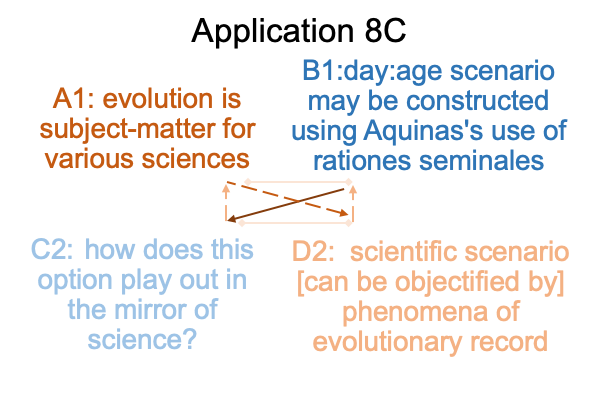
0799 In order to constellate the “theism” of “theistic (C2′) evolution (A3′)”, something must appear in the mirror of science (C2′).
That ‘something’ (C2′), must reflect a theological construction (B1′), which is, in this instance, a day:age scenarioutilizing Augustine’s notion of rationes seminales.
At the same time, that ‘something’ (C2′) should be engage the evolutionary scientist (A3′), indirectly nullifying his (A1) original image of an evolutionary model overlaying the noumenon in the mirror of science (B2).
0800 In this instance, the day:age correlation2a triggers the concept of an interventional sign-vehicle2c. This interventional sign-relation becomes ‘something’ that may appear in the mirror of science (C2′).
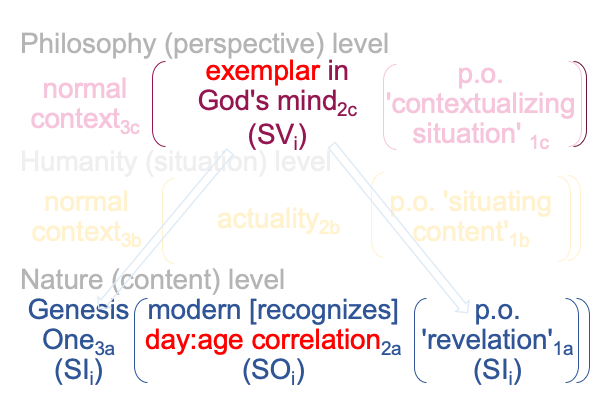
0801 The scientist (A3′) cannot ignore the image in the mirror of science (C2′).
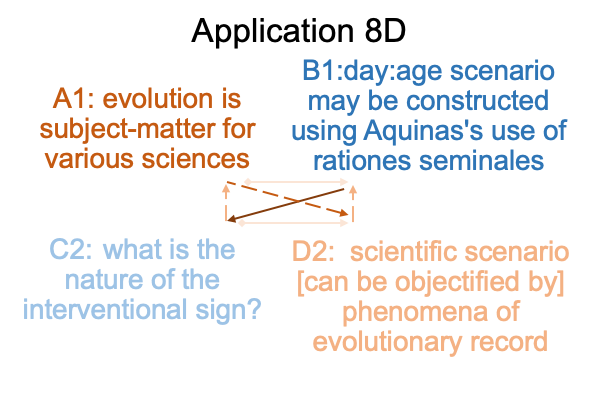
The interventional sign-relation defines humans as semiotic animals.
See Looking at John Deely’s Book (2010) “Semiotic Animals” appearing in Razie Mah’s blog for October, 2023.
How does the interventional sign-relation become innate in humans?
An answer (A3′) should produce a fascinating reflection in the mirror of theology (D4′).
Thus, the optics of theistic evolution in Tabaczek’s mirror challenges the theologian (B) and the scientist (A) in ways that evolutionary creation does not.

